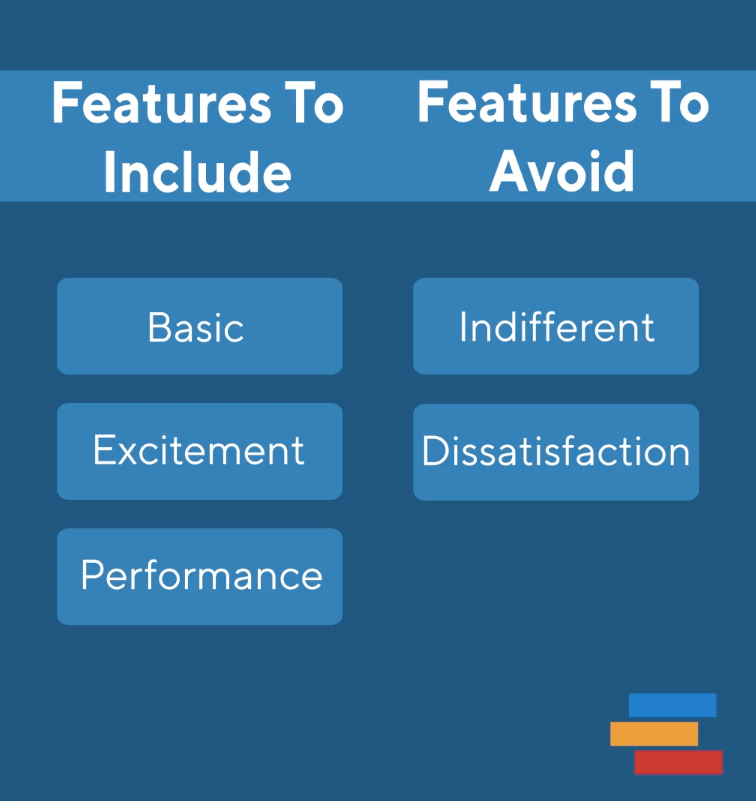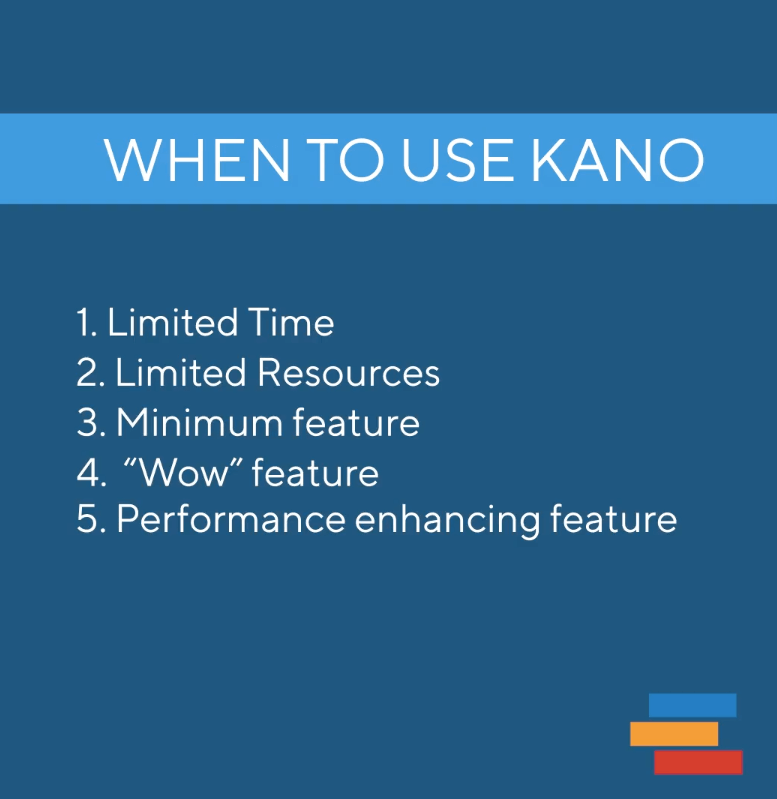What is the Kano Model?
The Kano Model (pronounced “Kah-no”) is an approach to prioritizing features on a product roadmap based on the degree to which they are likely to satisfy customers. Product teams can weigh a high-satisfaction feature against its costs to implement to determine whether or not adding it to the roadmap is a strategically sound decision.
The Kano Model is one of many prioritization frameworks designed to help product teams prioritize initiatives. For example, Kano can help teams determine which features will satisfy and even delight customers. Product managers often use the Kano Model to prioritize potential new features by grouping them into categories. These feature categories can range from those that could disappoint customers to those likely to satisfy or even delight customers.
This strict focus on how customers react to each feature distinguishes the Kano Model from other prioritization frameworks. The Benefits vs. Cost Model, for example, might use customer satisfaction among its scoring criteria but might also use different criteria, such as increased revenue. With the Kano Model, the key consideration for any new feature is how much it will satisfy users.
Watch this video to visualize the Kano Model and learn how your product team can use it to prioritize initiatives.
What is the History of the Kano Model?
Dr. Noriaki Kano, a professor of quality management at the Tokyo University of Science, created the Kano Model in 1984. As author Dave Verduyn explains, Dr. Noriaki developed this framework while researching the factors that contributed to customer satisfaction and loyalty.
The model identifies five categories of potential customer reactions to a new feature, ranging from dissatisfaction to indifference, all the way up to what many call customer delight or excitement features.
How Does the Kano Model Work?
Using the Kano Model, product teams pull together a list of potential new features vying for development resources and space on the roadmap. The team will then weigh these features according to two competing criteria:
- Their potential to satisfy customers.
- The investment is needed to implement them.
You can also think of the Kano Model as the “Customer Delight vs. Implementation Investment” approach.
What are the Kano Model Feature Categories?
The Kano Model identifies three types of initiatives product teams will want to develop. We will discuss those below.

It’s also worth pointing out, however, that the model also identifies two types of features you will want to keep off of your roadmap:
- “indifferent” features, which customers won’t care about.
- “dissatisfaction” features, which will upset customers.
Under the Kano Model, the three categories of initiatives that could earn a slot on your roadmap include:
Basic (threshold) features
These are features your product needs to be competitive. Customers expect these features (such as a car’s turn signal) and take them for granted. This means they must be included. And, if they don’t work as expected, they may lead to dissatisfaction.
Excitement features
Excitement features yield a disproportionate increase in customer delight as you invest in them. If you don’t have these features, customers might not even miss them; but if you include them and continue to invest in them, you will create dramatic customer delight. You can also think of these features as the unique innovations and surprises you include in your product. Dr. Noriaki called these “attractive” features and “delighters” because they had that effect on users, and that delight can create an outsized positive response to your product.
After the internal product team has made its own determinations about which of the potential new features fall into which categories (including the two negative ones—indifference and dissatisfaction), the team will then take the issue directly to users or prospective users with customer surveys, questionnaires, and other feedback methods.
Performance features
These are features that give you a proportionate increase in customer satisfaction as you invest in them. One example would be increasing file storage capacity in an online app. Dr. Noriaki described this type of feature as “one-dimensional” because of the direct, linear correlation between how much you invest in it and the amount of customer satisfaction it delivers. These also feature customers who know they want and weigh heavily when deciding whether to choose your product or your competitor’s.
Explore how to prioritize your product roadmap with the Kano Model:
When Should You Use the Kano Model?
The Kano Model can be a helpful framework for product teams with limited time and resources who want to make sure they prioritize the appropriate mix of features to work on next.

This approach is most effective for teams in need of guidance to figure out which minimum-threshold features they absolutely must build, which performance features to start investing in now, and which customer-delight features will deliver the biggest customer “Wow!” for the buck.
As product management consultant Daniel Zacarias explains, “There are many different reasons why you might need to include a given feature, but what do you do to know which ones will make your (future) customers happy and prefer it over others?”
The Kano Model can help product teams answer that all-important question.
Kano Model Takeaways
The Kano Model is a useful framework for product teams looking for a systematic approach to feature prioritization. In addition, it helps teams that are interested in prioritizing functionalities they believe will delight customers.
For more guidance, watch our webinar on prioritization.
